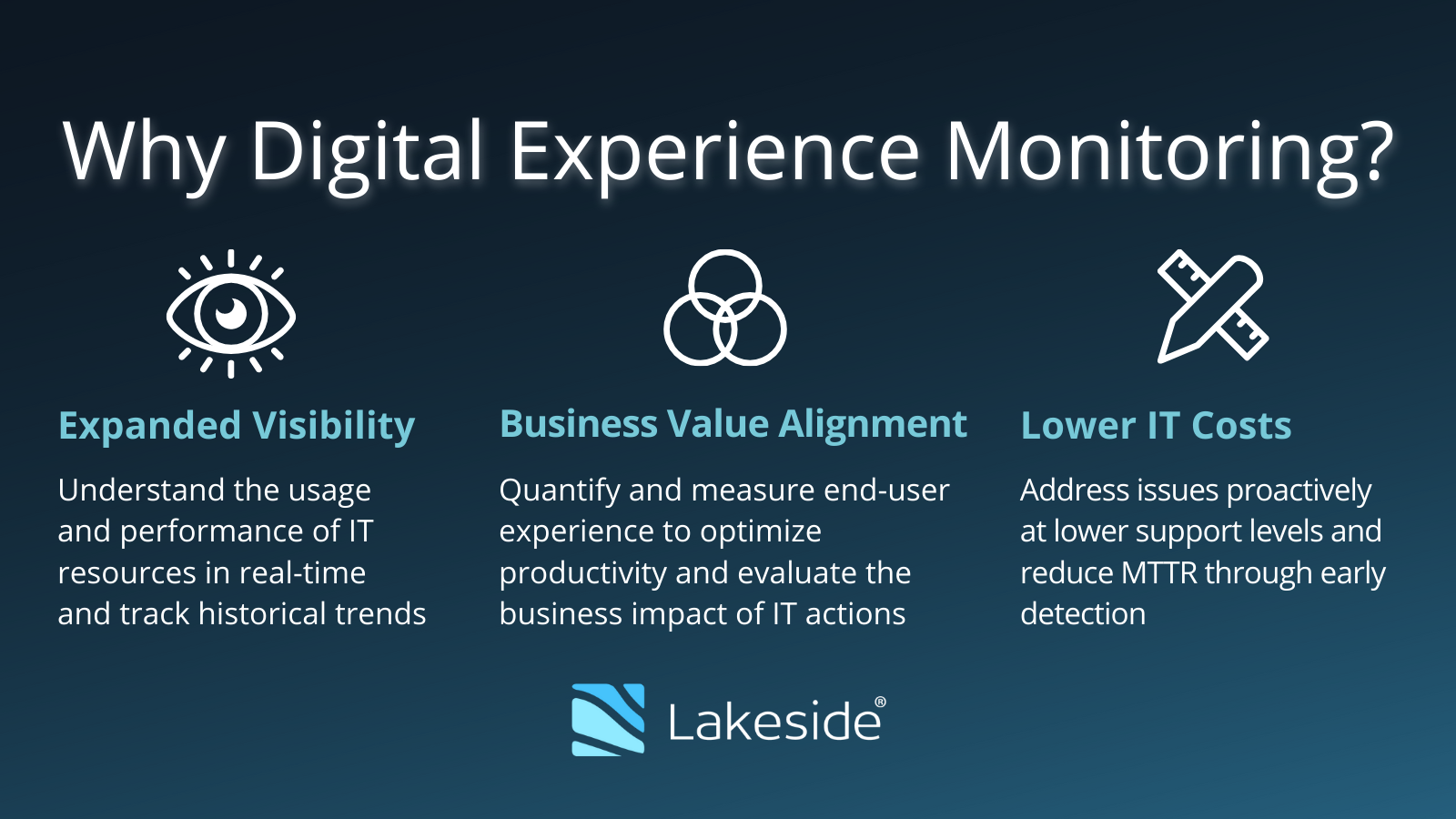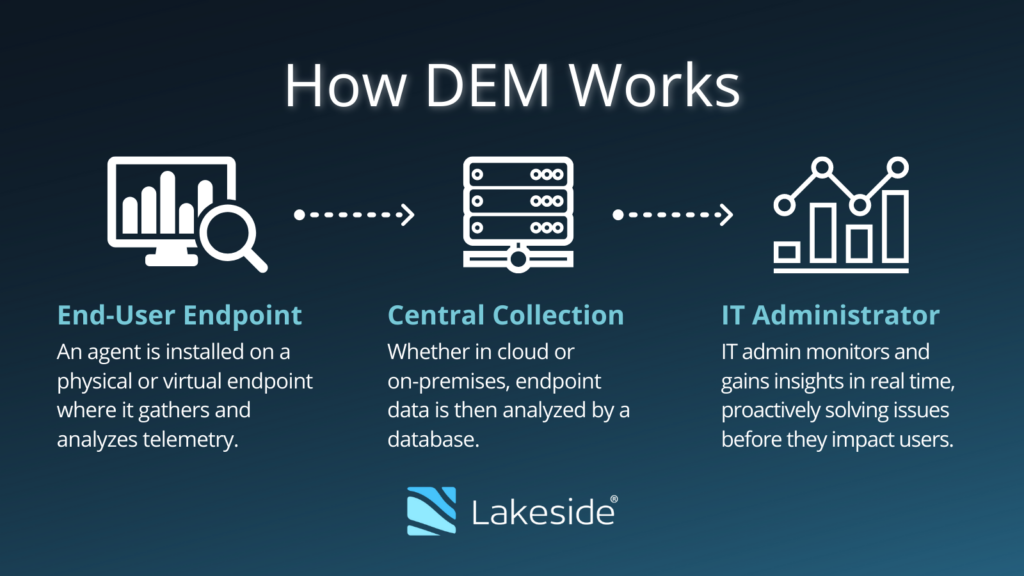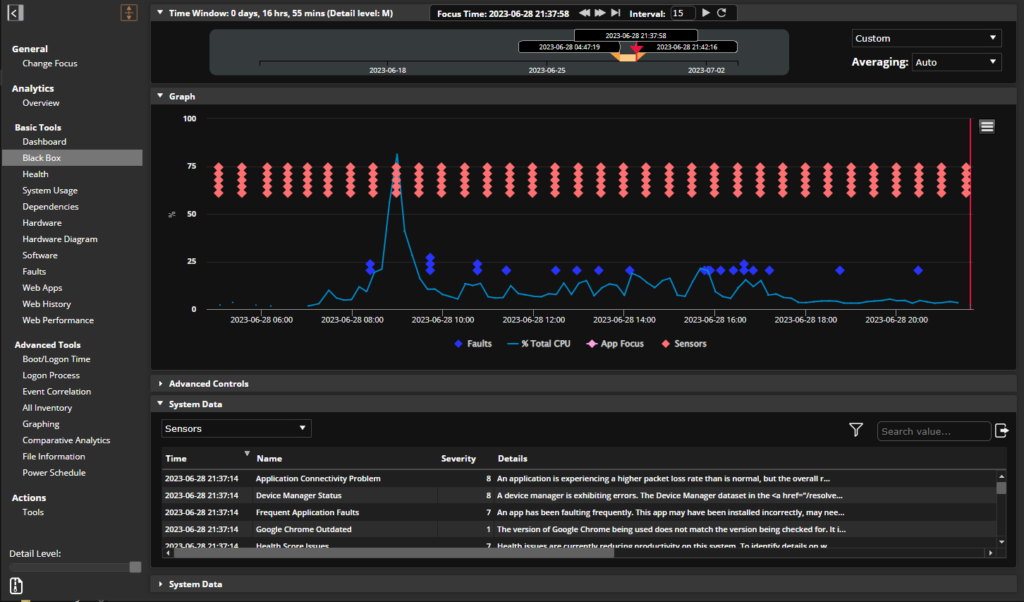Why Organizations Are Shifting from APM Tools to DEM Solutions

A quick guide to how digital experience management can improve IT visibility across the entire digital environment — apps included.
As part of their efforts to improve IT efficiency and employee engagement, organizations are moving from application performance management (APM) to digital experience management (DEM) platforms. Why? Expand IT visibility across the entire digital environment — apps included.
As part of their efforts to improve IT efficiency and employee engagement, organizations are moving from application performance management (APM) to digital experience management (DEM) platforms.
This shift from APM to DEM in the world of IT service management (ITSM) indicates the importance of investing in a comprehensive solution that takes into account both performance metrics and user sentiment in order to deliver holistic visibility into the IT environment.
With trends of digital transformation and hybrid forms of work, digital experience management has become strategic to measuring the impact of digital experience on productivity and other key performance indicators (KPIs). Research from Gartner predicts that digital experience metrics will be required for 70% of digital business initiatives by 2025.
What’s Application Performance Management (APM)?
As the name application performance management suggests, APM focuses on the performance of applications. Application performance monitoring (also referred to as APM) tracks and measures how applications are functioning. Application performance management includes application performance monitoring, but it is broader in scope because it provides a more comprehensive view of all applications in use.
APM software can identify performance problems that are causing an application to crash or run slowly. Questions related to the performance of applications might include:
- Is the application available for use?
- What’s causing downtime?
- How much memory is the application using?
- What is the normal CPU usage for this type of application?
- How much traffic does the application receive?
- What’s the error rate of the application?
- How long does the app take to respond to user action?
What’s Digital Experience Management (DEM)?
Digital experience management solutions track and analyze the quality of the end users’ interactions with workplace technology. Organizations can use those insights to minimize IT issues, optimize software and hardware resources, and better meet business outcomes.
Digital experience monitoring (also referred to as DEM) is part of the overall digital experience management. Application performance and usage are crucial components of digital experience management, too. Slow connections and crashing apps all affect the employees’ ability to get their jobs done and their perceptions of workplace technology.
APM vs. DEM: Key Differences
In order to ensure a positive digital experience, DEM solutions also track and measure the performance of applications, but they do so from the user’s point of view. It’s a different perspective, not limited to technical app performance monitoring.
Here are the key differences between APM and DEM tools:
- While APM focuses on the technical performance of applications and services, DEM takes into account the IT environment as a whole, including devices and user sentiment.
- APM software looks into application performance issues from a technology point of view, while DEM measures the impact of application performance from the user’s vantage point.
- DEM has a broader scope than APM tools and, for this reason, offers more use cases, such as digital workplace planning and hardware performance management.
Benefits of DEM Platforms over APM Solutions
Digital experience management and application performance management are becoming more integrated. However, there are still several advantages in choosing a DEM platform over an APM solution.
Deeper Visibility
Digital experience management offers a more comprehensive view of the IT environment because it collects both quantitative and qualitative data from the endpoint perspective.
Lakeside’s Digital Experience Cloud, powered by SysTrack, gathers more than 10,000 telemetry metrics every 15 seconds through an ultra-lightweight agent deployed to each endpoint — whether physical or virtual systems running Windows, macOS, Linux, or Android OS. In addition, the platform also collects employee feedback via surveys.
User Sentiment
By collecting qualitative data, digital experience management solutions enable the IT team to understand user sentiment and how the applications are performing in the employee’s view.
Surveys can also help to:
- Gauge software and hardware adoption.
- Identify remote work challenges.
- Receive help desk satisfaction feedback.
With Lakeside’s cloud-based platform, IT teams can use prebuilt surveys or create their own. Thanks to artificial intelligence, technicians do not have to read hundreds of survey responses. Lakeside applies IBM Watson natural-language processing to provide a pulse on the overall user sentiment across the organization.
Digital Experience Index
Another advantage of digital experience management is its unique ability to measure the impact of digital experience on productivity. Lakeside’s cloud-based solution calculates an end-user experience score that indicates how much time an employee lost due to technology-related difficulties.
Digital Workspace Planning
Companies also use digital experience management for desktop transformation initiatives and remote work planning. For example, many organizations turn to Lakeside’s platform to assess their readiness for virtual desktop infrastructure (VDI) initiatives.
More Use Cases
By deploying a platform with more use cases, companies can quickly achieve their return on investment (ROI). That’s the case with better resource optimization.
Lakeside can track and assess which devices users are using on a daily basis, and how they are performing. The IT team can then reduce costs by making upgrades based on actual needs instead of typical refresh cycles.
How Lakeside Helps to Manage App Performance
As a digital experience management platform, Digital Experience Cloud also has application performance capabilities.
For example, Lakeside’s platform provides insights into how applications are running in the overall environment and how they are consuming resources. By optimizing applications, IT can take proactive steps to improve the digital employee experience.
Subscribe to the Lakeside Newsletter
Receive platform tips, release updates, news and more





